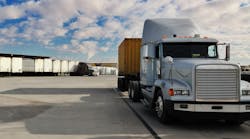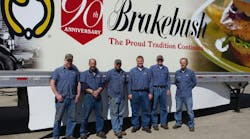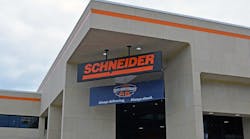Four Steps to Access Capital Approval for Modernizing Your Fleet
The transportation group of any company is operationally intensive. Their mission is to get the product delivered on time and safely. Although most transportation managers recognize new equipment is a key factor in equipment reliability, driver satisfaction and on-time deliveries, they are often challenged by competing departments when it comes time to access capital. CFOs typically allocate capital based on its potential to grow the company or by its return on investment. Although it is challenging for the transportation group to demonstrate how new trucks can contribute to the growth of the company, it is not difficult to calculate the return on investment. However, it requires a financial analysis that is familiar to finance.
There are four steps necessary to calculate an appropriate return on investment and although not easy, it is well worth the time and effort as the results demonstrate a rapid return on investment.
- Benchmark your fleet by completing a fleet study. This should be in the form of a spreadsheet that contains the following:
- Current equipment model year
- In-service date
- Prior 12-month mileage, maintenance and repair costs
- Fuel expense
- Pro forma cost for the upcoming 12 months
- Calculate the difference in MPG of the latest model year of your preferred manufacturer against your current MPG. There are a number of ways to accomplish this especially if you have been running some late model year equipment in your own operation. Other avenues include asking contemporaries running these model year vehicles who are willing to share information of current MPG stats. Since 2010, data confirms an improvement in MPG of 2.5% per model year. Otherwise stated, if your current MPG is 6.2, a 5-year newer model will achieve approximately 7 MPG.
- Include ‘opportunity costs’ in your assessment. The opportunity cost is a critical component in your analysis. The cost of operating a new truck rather than a 6-year old truck saves $5,500 per truck per year in fuel costs based on 100,000 MPY and $3.00 per gallon. Likewise, using industry standard maintenance and repair costs, year six cost is approximately 11¢ a mile while the first year cost is only 1.5¢, or an additional savings of $9,500. You must also factor in the ‘efficiency gain’. A 6-year old truck will be out-of-service for approximately four weeks during the year while a new truck yields an 8% gain in productivity savings bringing the total year one savings to $16,200 in a “hard dollars” return-on-investment.
- Calculate the actual investment in the new equipment. Your existing five-year-old truck has a value of approximately $30,000. A new truck is approximately $115,000. The difference is the investment of $85,000. The $16,200 is yielding a first-year return of over 19%. Most companies have a return on investment that is lower.
There are also a number of ‘sweeteners’ if you dig deeper into an average vehicle lifecycle of 3-4 years. Following are some examples.
Improved corporate image. Your fleet is your company’s signature on the road and is a rolling billboard. I don’t know a CEO or CFO that wouldn’t want a fleet that portrays a crisp, clean, environmentally friendly and efficient corporate image.
New equipment reduces driver turnover. The cost of recruiting, hiring and training a driver is $6-$10,000 a year.
Safety. Newer technologies like lane departure warnings and roll-stability are lowering accidents and fatality rates. FMCSA estimated crash cost statistics are stated below:
Estimated cost of CMV crashes (2013 dollars)
Fatality Injury Property damage
Est. cost $42 billion $39 billion $22 billion
# of crashes 3541 69,000 254,000
Est. cost per crash $11.8 million $0.56 million $86,614
Keep in mind that modernizing you fleet is not a one-time proposition. With government mandated improvements in fuel economy and rising maintenance costs expected to continue for the foreseeable future, an appropriate vehicle lifecycle of 3-4 years provides for a continuous improvement model and allows fleet operators to replicate this high return on investment and produce both tangible and intangible benefits at every turn of the equipment.


